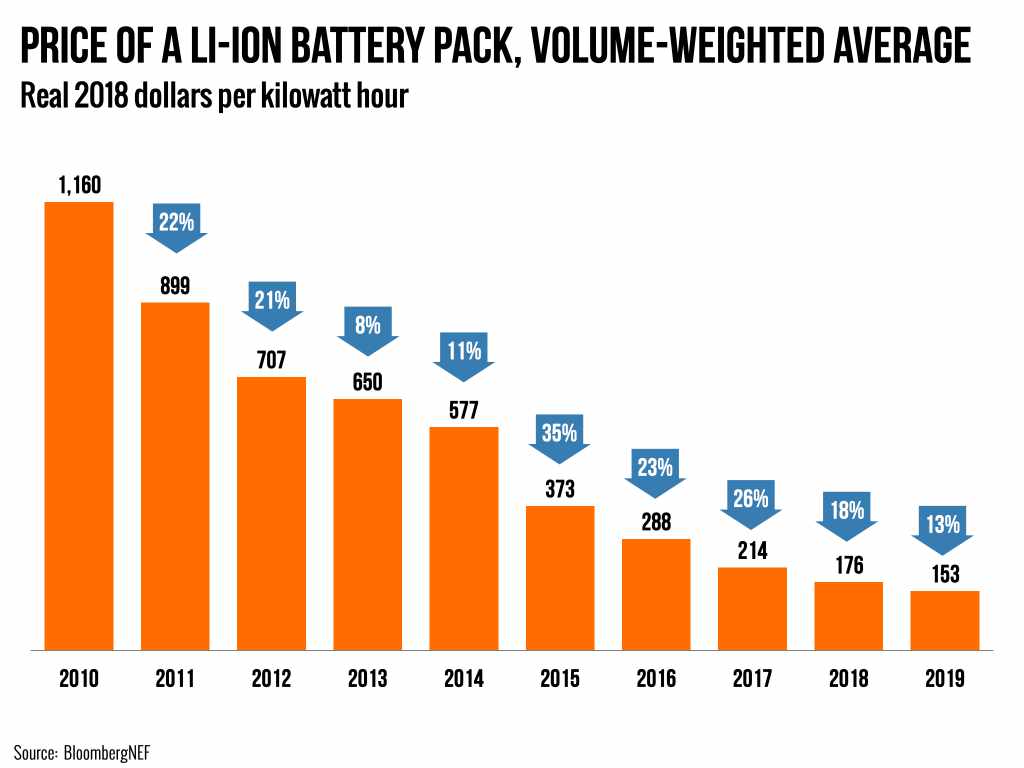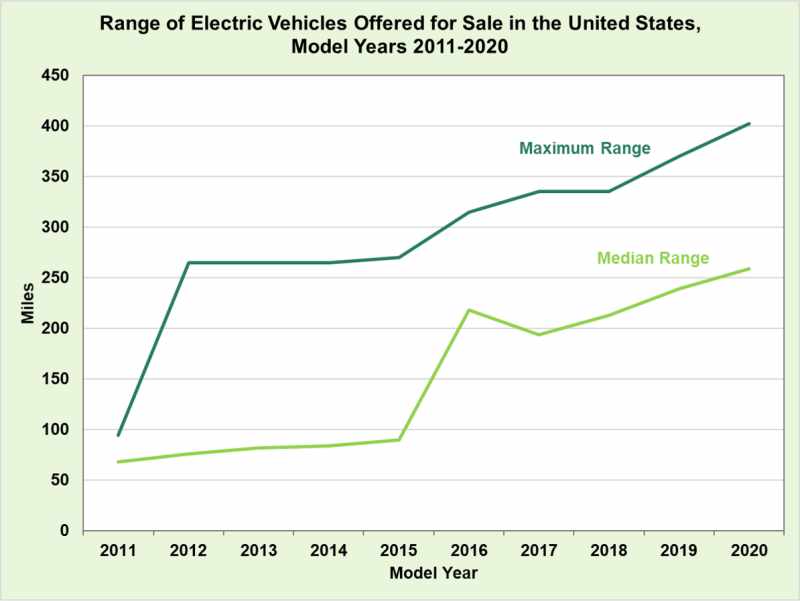Bloomberg’s predictions on the evolution of the prices of batteries for electric cars says that by 2023, kWh’s cost would fall to $100. An unstoppable dynamic in recent years has also been accompanied by an evolution of chemicals that have allowed each vehicle to be offered more autonomy without increasing prices.
This has been stipulated in a report by the United States Department of Energy, which has produced a very illustrative graph of this trend. We see how in nine years, the autonomies of electric cars have skyrocketed.
As we can see, in 2011, the beginning of the modern era of the electric car, the average autonomy barely reached 62 miles, while the maximum was around 87 miles. Figures that today have been forgotten by most manufacturers, not all, were also accompanied by a very high cost of the vehicle, which was completed with a little resistant chemistry that resulted in premature degradation.
But as we see in the graph, the situation has been gradually improving, with an average autonomy that had experienced its great leap forward in 2016 when it reached 198 miles. For its part, maximum autonomy has already undergone a jump ahead with the arrival of the Tesla Model S in 2012, which shot the range up to 248 miles.
One of the interesting things is that, according to the Department of Energy, between 2016 and 2017, the average autonomy has decreased slightly, until in 2018 it began to increase thanks to the arrival on the market of new proposals, such as the Tesla Model 3 or the Hyundai Kona among others. Something that has allowed the average to be above 248 miles for the first time.
For its part, maximum autonomy has also achieved its highest score in 2020, exceeding 397 miles for the first time.

This means that since 2011 the average autonomies have grown an average of 29% each year, while the price of batteries has dropped by 18% each year on average until 2020. A trend that, as we see, will continue in the coming years, which will result in vehicles with more and more autonomy and with more competitive prices. Undoubtedly leading to projects prohibiting the sale of cars with combustion engines in the long term, becoming obsolete before their time pushed by the evolution of technology.

